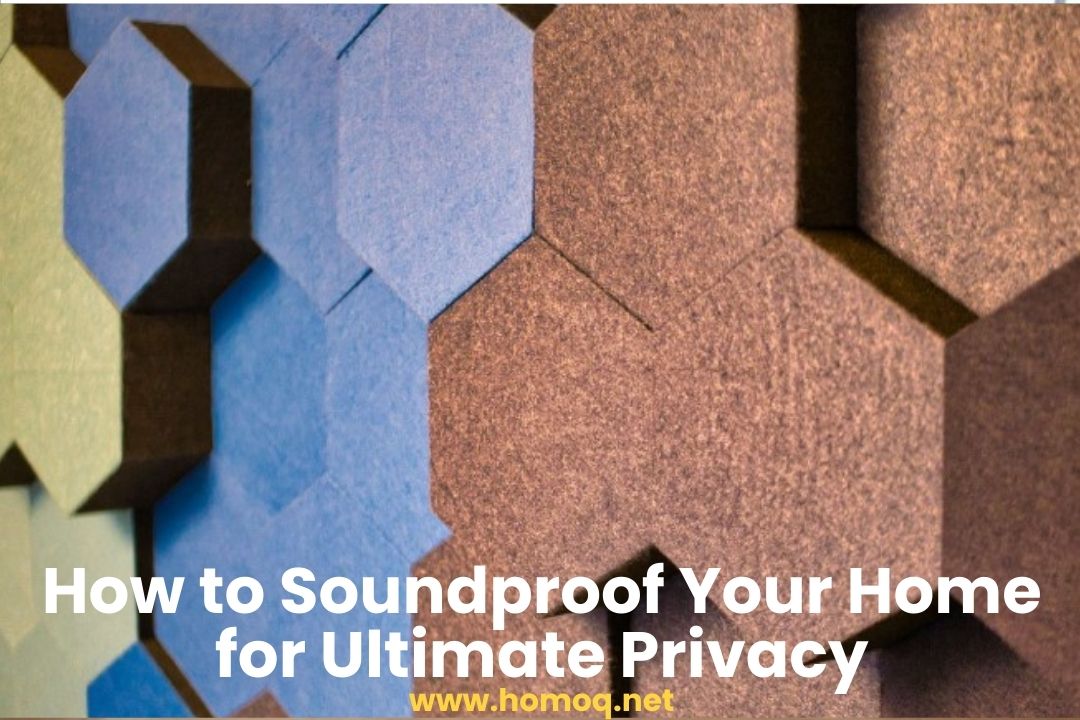Creating a peaceful and private environment in your home can significantly improve your quality of life. Whether you’re dealing with noisy neighbours, street sounds, or echoing indoor spaces, soundproofing can help block unwanted noise while enhancing your home’s comfort. This article will guide you through practical strategies to soundproof your home and achieve ultimate privacy.
Understanding the Basics of Soundproofing
Soundproofing reduces or blocks sound transmission through walls, ceilings, floors, doors, and windows. There are two main types of soundproofing techniques:
- Sound Absorption: Reduces sound reflections and echoes within a space.
- Sound Blocking: Prevents sound from travelling into or out of a space.
By combining these methods, you can create a more tranquil and private environment in your home.
How to Soundproof Your Home for Ultimate Privacy
1. Soundproofing Walls
Walls are a primary source of sound transmission. Here are practical ways to soundproof them:
- Add Mass: Install heavy materials like soundproofing panels, mass-loaded vinyl (MLV), or acoustic drywall.
- Use Insulation: Add soundproofing insulation inside wall cavities, such as fibreglass or mineral wool.
- Seal Gaps: Use acoustic caulk to seal cracks, holes, and gaps where sound may pass through.
- Install a Second Layer: Adding a second layer of drywall with green glue sound-damping compound in between can block more noise.
2. Soundproofing Doors
Doors are often weak points for sound leakage. Consider these upgrades:
- Install a Solid Core Door: Replace hollow-core doors with solid-core alternatives for better noise reduction.
- Add Weatherstripping: Seal gaps around the door frame with weatherstripping.
- Install a Door Sweep: Attach a door sweep to block the gap at the bottom of the door.
- Hang Acoustic Curtains: Use heavy, soundproof curtains over doors to block additional noise.
3. Soundproofing Windows
Windows allow significant sound to enter your home. Here’s how to soundproof them:
- Use Double or Triple-Glazed Windows: These windows provide better insulation and soundproofing than single-pane options.
- Install Window Inserts: Removable window inserts can reduce noise without replacing your windows.
- Hang Soundproof Curtains: Thick, heavy curtains made of soundproofing materials can block sound effectively.
- Seal Gaps: Use acoustic caulk to fill gaps or cracks around window frames.
4. Soundproofing Floors
Floors can transmit sound between levels of a home. Consider these methods:
- Add Rugs and Carpets: Thick rugs and carpets absorb sound and reduce echoes.
- Install Acoustic Underlay: Place an acoustic underlay beneath flooring materials to reduce sound transfer.
- Use Soundproofing Mats: These mats provide an additional layer of noise absorption.
5. Soundproofing Ceilings
If noise from above is an issue, soundproof your ceilings using these techniques:
- Install Acoustic Panels: These panels absorb sound and reduce echoes.
- Add a Drop Ceiling: A drop or suspended ceiling with soundproofing tiles can block noise from upstairs.
- Apply Insulation: Add insulation to the ceiling cavity to dampen sound transfer.
6. Managing Noise in Specific Rooms
Soundproofing Bedrooms
- Use blackout curtains with soundproofing capabilities.
- Place upholstered furniture to absorb sound.
- Install a white noise machine for ambient sound masking.
Soundproofing Home Offices
- Add sound-absorbing panels on walls.
- Use noise-cancelling headphones to minimise distractions.
- Position bookshelves along walls for additional sound absorption.
Soundproofing Living Rooms
- Arrange furniture strategically to block sound pathways.
- Hang decorative acoustic art panels.
- Use area rugs with soundproofing pads underneath.
Additional Tips for Effective Soundproofing
- Strategic Furniture Placement: Large furniture like bookshelves and wardrobes can help block noise from shared walls.
- Use Acoustic Paint: Acoustic paint can reduce sound by absorbing noise vibrations.
- Seal All Openings: Check for and seal any openings, including electrical outlets, vents, and cracks, where sound may escape.
Benefits of a Soundproof Home
- Improved Privacy: Prevents conversations and sounds from being overheard.
- Better Sleep: Reduces disturbances from outside noise, promoting restful sleep.
- Increased Comfort: Creates a peaceful and quiet living environment.
- Enhanced Focus: Ideal for home offices or study spaces where concentration is crucial.
Frequently Asked Questions (FAQS)
1. How much does it cost to soundproof a home?
The cost varies depending on the size of the space and the materials used. Simple DIY solutions can cost as little as $200, while professional soundproofing projects may cost thousands.
2. Can I soundproof my home on a budget?
Yes! Budget-friendly options include rugs, heavy curtains, weatherstripping, and sealing gaps with acoustic caulk.
3. What is the most effective soundproofing material?
Mass-loaded vinyl (MLV), acoustic panels, and fiberglass insulation are the most effective soundproofing materials.
4. Is it possible to eliminate all noise?
While soundproofing significantly reduces noise, it is challenging to eliminate all sound. However, a well-soundproofed space can achieve near-complete noise isolation.
5. Are soundproof curtains effective?
Yes, soundproof curtains effectively reduce noise, especially when combined with other soundproofing measures like sealing gaps and using acoustic panels.
Conclusion
Soundproofing your home is an investment in privacy, comfort, and peace of mind. You can significantly reduce noise transmission and create a tranquil environment by addressing walls, windows, doors, floors, and ceilings. With the tips and techniques outlined in this article, you can enjoy ultimate privacy and a quieter home. Start small with simple DIY solutions or explore professional soundproofing options for a long-term solution.

